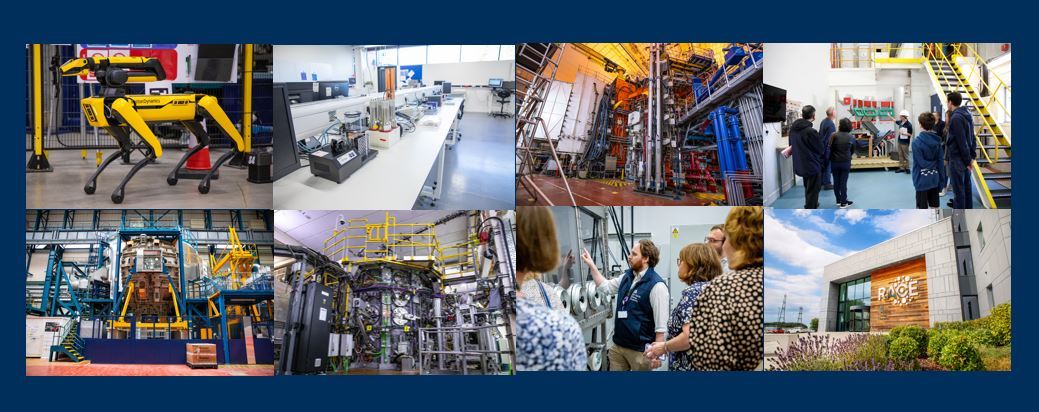MAST Upgrade:
MAST Upgrade is UKAEA’s flagship fusion machine. It is tackling key science challenges and keeping the UK at the forefront of the quest for sustainable and low carbon energy from fusion.
MAST Upgrade was constructed between 2013 and 2020, building on the previous MAST machine which operated from 2000 to 2013. It is developing a design called the spherical tokamak, which will form the basis for the STEP powerplant when it’s built at West Burton in Nottinghamshire.
JET:
Joint European Torus (JET) was the world’s largest and most powerful fusion machine - it operated for over 40 years, setting a series of fusion performance records until closing in late 2023. The project was hosted by UKAEA for labs around Europe and laid the foundation for many of the advances we see in fusion research today.
Now JET is becoming a pioneer in the decommissioning of large fusion facilities. The techniques and knowledge from UKAEA’s JET Decommissioning & Repurposing (JDR) programme will help to develop future fusion plants that are sustainable from both an environmental and financial perspective.
Materials Research Facility:
The Materials Research Facility (MRF) is enabling researchers to find the right materials for fusion powerplants – one of the most important areas for getting fusion power on the grid.
MRF prepares tiny samples, often much less than the width of a human hair, so scientists can analyse the structure of the materials at a microscopic scale. It is a unique facility within the UK and has internationally-leading equipment that’s much in demand from industrial and academic users.
RACE:
RACE is the UKAEA’s centre for Remote Applications in Challenging Environments. RACE designs, operates and delivers robotics for industrial environments where people cannot work.
RACE builds on its heritage of over 30,000 hours of remote maintenance on JET to develop technology for the next generation of fusion machines, and for wider industries from nuclear to space.
Fusion Technology:
Fusion Technology is taking us towards power plant delivery by enabling testing of prototype components in the conditions found inside fusion reactors. In B24 there are the following:
RAD Lab has multiple detectors for measuring gamma-rays, neutrons, and providing measurement services and training opportunities for universities, and industry.
HIVE can test prototype cooled and un-cooled components under high heat fluxes in a high vacuum environment.
AMT lab has multiple rigs and microscopes for small-scale materials sample testing and characterisation under widely varied conditions which will inform design codes and standards for fusion.

